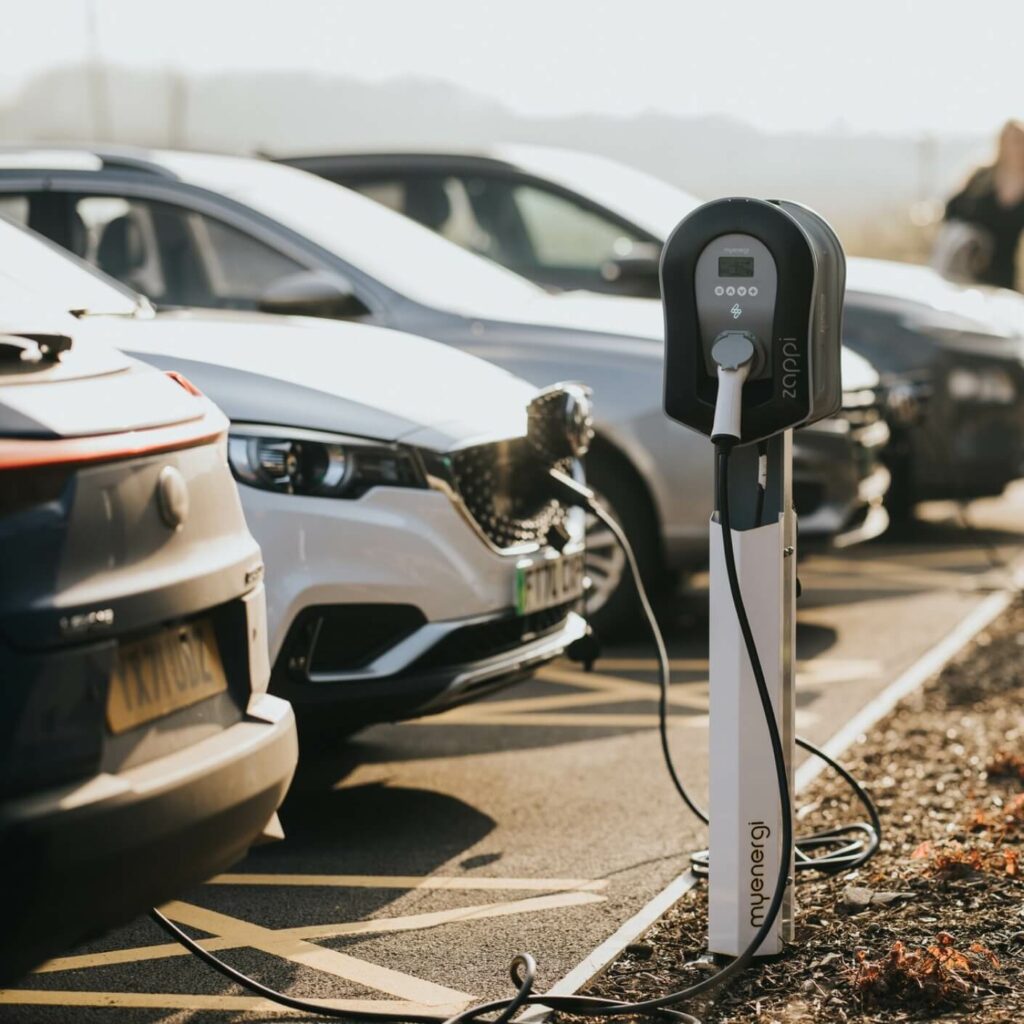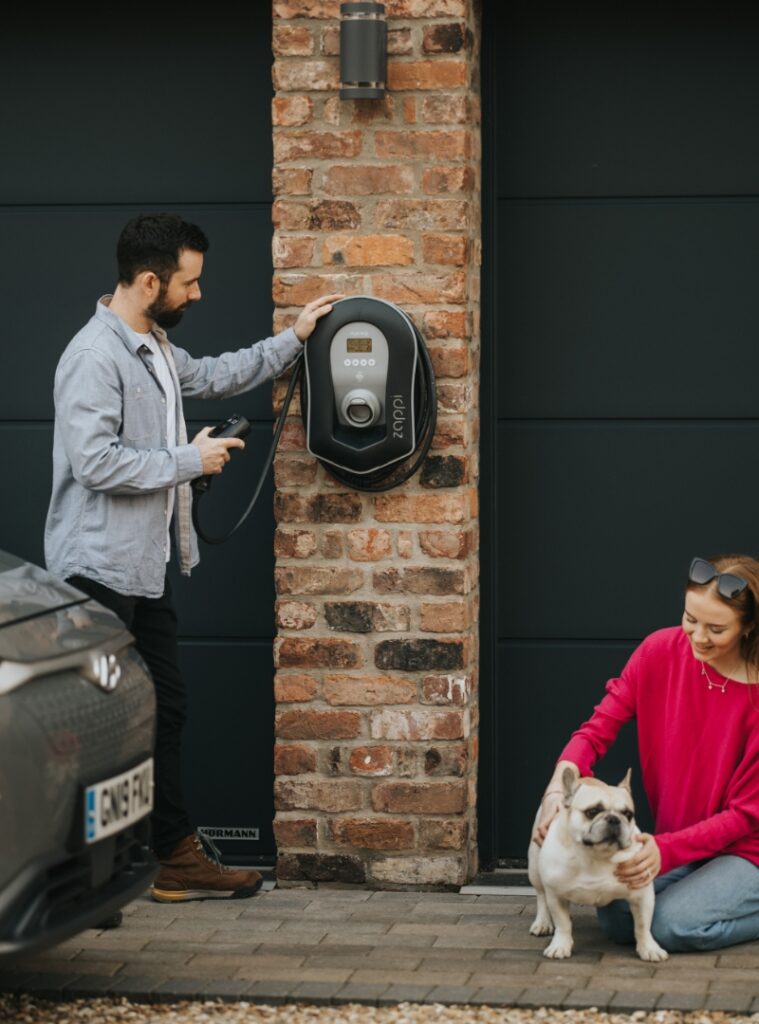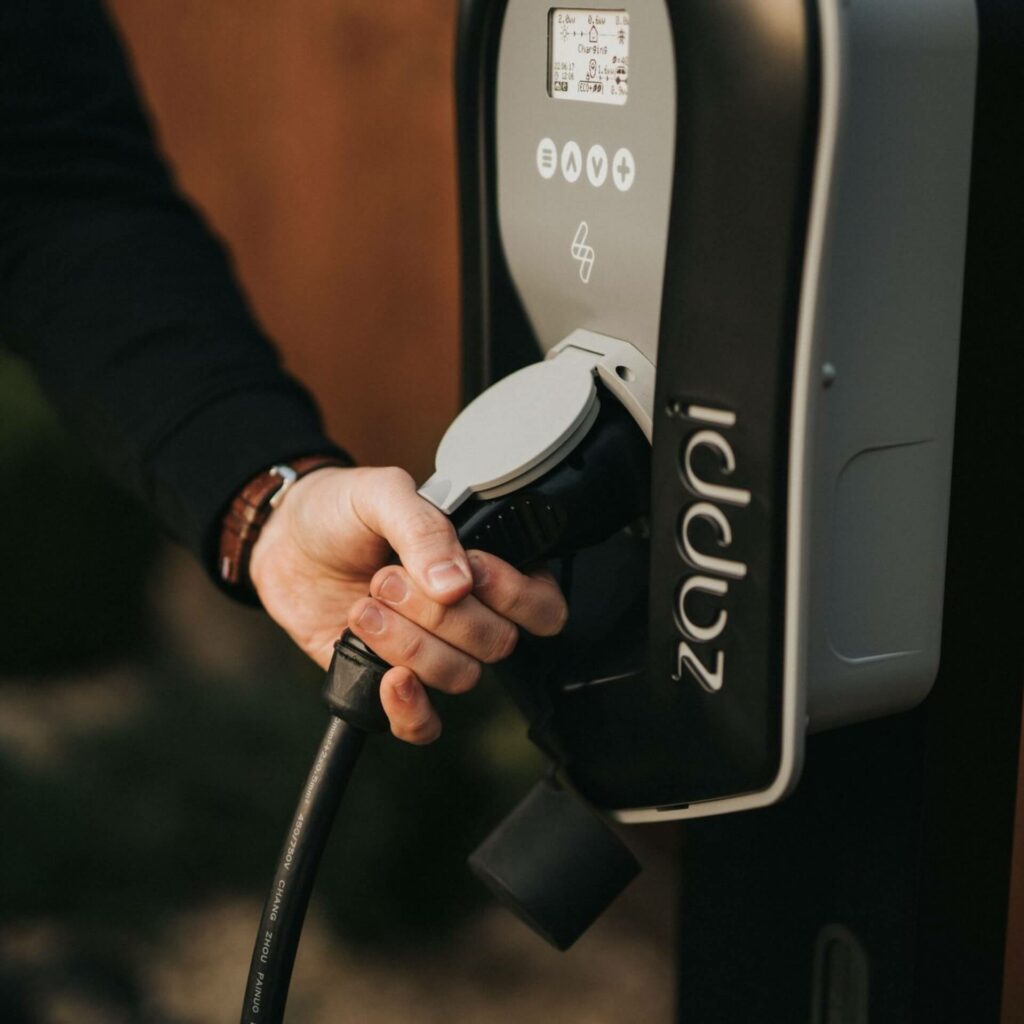How long does an electric car take to charge?

How long does an electric car take to charge?
Firstly, you need to know the size of the vehicle battery in kWh and the rate of the charge in kW. Based on an average 54kWh battery, a 50kW public charger would take around 64 minutes to achieve a full 100% charge, whereas a typical 7kW home charger would take around 7hrs 42 minutes.
However, it also depends on the amount of charge you require for the journey ahead. For example, if you know you only require 10% battery to get home, you may opt to only charge up to 25% capacity using a public charger and this would take roughly a quarter of the time, 16 minutes.
How to work out how long it takes to charge an EV

Want the excruciating details and minutes?
70kWh is easy to work out! Let’s assume your battery is 54kWh which is a figure we’ve concluded as a rough average across 40 of the best selling EV’s.
The maths is the same! Find the nearest whole number, 7 (kW) x 7 (hours) = 49kWh of charge. At this point, we know this particular vehicle would take over 7hrs, though less than 8hr’s, to achieve a full 100% charge.
Not accurate enough? If you would like to know the extended minutes. Take the remaining 5kWh required to hit (54kWh), divide by 7kW and times by 60 minutes (5 ÷ 7 x 60) which equals 42 minutes.
Voila! the average time to charge an EV is around 7 hours 42 minutes!

Are all electric car chargers the same?
Not all electric vehicle chargers are the same, though almost all modern EV’s come with Type 2 sockets which are compatible across all the variations of charger. This is with the exception of a handful of very early models which use a Type 1 charger.
Home chargers require an AC single phase supply which most UK homes have and charge at a rate of 7kW. Public chargers (known as rapid chargers) are usually DC and charge at much faster rates between 50kW – 150kW, though usually for a higher cost.
There are also 22kW chargers available, (known as Fast Chargers) for your home or workplace, though the premises would require a 3 phase supply to charge at these faster rates. These types of charger are often used on commercial premises. Equally, not all vehicles can charge at these higher rates of AC, so it’s worth checking if your vehicle can handle 22kW charges. That said, you wouldn’t do any damage plugging into a 22kW charger, instead your vehicle would simply revert to charging at the slower 7kW rates.
If you do have a 3 phase supply, we’d recommend opting for a zappi 22kW charger to utilise faster charging rates, and we recommend a zappi 7kW charger.
Your top EV questions – answered!
The easiest, and most efficient, place to charge your vehicle is at home using your own charging station, such as the zappi 7kW eco charger, especially overnight. However, if you are running low whilst out on the road, there are over 15,000 public charge points located throughout the UK, with more being listed every day.
Charging forecourts such as the above Gridserve electric forecourt in Essex are becoming more common. Charging infrastructure is growing rapidly, especially since the announcement to ban the sale of fossil fuel cars from 2030. Many workplaces are now adopting free charging points in staff parking areas, enabling you to charge your vehicle whilst you work.
One of the many benefits of owning a domestic charge point is your ability to do just that. Many EV owners treat their vehicles in the same way they do their mobile phones and tend to keep them charging throughout the night, ready for the morning.
This will save you time and make you less reliant on public charge points. For most average drivers, it is not absolutely necessary to charge your electric vehicle every night, in the same way it is not necessary to travel to the petrol station everyday.
Rapid chargers are the large bulky sized chargers you are most likely to find at dedicated public charging stations. These are the types of chargers you would most likely stop at on a long journey. When you need to achieve a full charge in between 20 – 60 minutes (whilst you’re eating your lunch). The main difference between fast commercial chargers and rapid chargers is that fast chargers use alternating current (AC) whereas rapid chargers use direct current (DC).
The power transmitted across our national grid and received in our homes is Alternating Current (AC) because it is more economical and better at travelling longer distances. However, batteries always require power as DC, which is why there is often a large transformer block between the 13amp wall socket and the device, such as a laptop or console. Electric vehicles are no different and have components inside to convert AC to DC, which enables the power to be stored in the vehicle battery. Ultimately, electric vehicles are like big laptops on wheels.
Rapid chargers are slightly different, to regular chargers, because this AC to DC conversion process happens inside the charger itself. The components involved in this conversion process are usually heavy, expensive and require far more power from the grid (125A) to perform this conversion quickly. This makes rapid charging more expensive than AC charging. However, it is the best option available for mid journey pitstops, when you need to recharge quickly.
We’d recommend that you limit the use of rapid chargers to emergency charging and long journeys only, to save money and preserve the longevity of the vehicle battery. Home chargers are certainly the best option for regular day to day charging, such as the zappi 7kW home EV charger.
A granny charger is ultimately a car’s emergency spare charger.
Most electric vehicles are able to plug into a standard 13a household 3-pin socket (the same thing your kettle is plugged into). This type of charger is most commonly known as a Type 1 charger. As suggestive of its name, it is the slowest option to charge an electric car, pulling just 2.3kW which equates to around 2 1/2 hours per 10% of charge, as opposed to 46 minutes when using a 7kW type 2 charger.
If you are currently resorting to plugging into a 3-pin socket and your vehicle accepts Type 2 charging, we’d recommend having a 7kW charge point installed. Such as the zappi, for triple the charging speeds at home.
The zappi is a popular choice for those entering into the world of EV and is one of the best selling home and workplace chargers across Europe. zappi is the worlds first ECO smart EV charger and made & designed in Britain. zappi is a smart EV charger which means it can be controlled, monitored and updated using your smart phone, tablet or computer via an internet connection.
This makes zappi one of the most future-proof chargers on the market.
The unit comes in a 7kW or 22kW version, with or without a Type 2 cable attached and a choice of two colours (black or white). zappi’s extra ECO features allow you to charge your vehicle, using solar or wind generated energy via your panels and/or turbine. Equally, zappi works as a simple plug and go stand alone charger.
Another great feature of the zappi, is your ability to utilise time of use tariffs. These tariffs, allow EV drivers to charge their vehicles for the cheapest daily prices available, whereby drivers can set their zappi to only charge when electricity prices are at their lowest.

